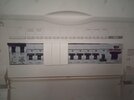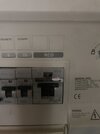Yes, but not Eaton/MEM. And the lighting busbars are on the unprotected busbar direct from the main switch.
Would be worth seeing a pic of the whole thing. Even better to see inside.
Would be worth seeing a pic of the whole thing. Even better to see inside.



